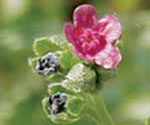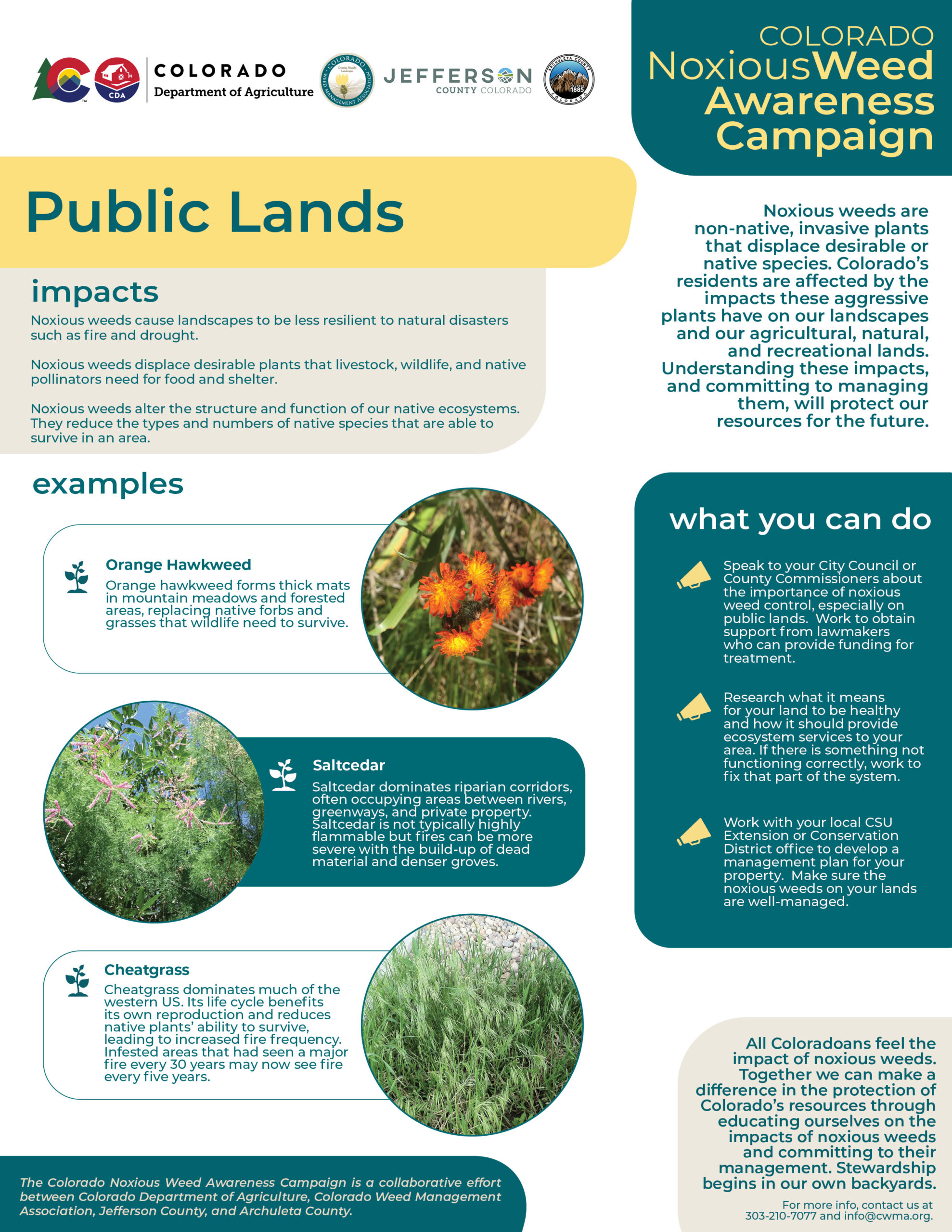Houndstongue
Cynoglossum officinale
Keys to Identification
- A biennial that was introduced from Europe
- Reproduces by seeds
- Stem is erect, stout, heavy, 1-1/2 to 3 ft tall
- Fowers are terminal and reddish-purple
- Seeds about 1/3 in long, the outer surface covered with short barbed prickles
- Contains alkaloids that may cause liver cells to stop reproducing
This information courtesy of the Colorado Natural Areas Program
Family
Boraginaceae (Borage)
Other Names
Hound’s tongue, dog bur, gypsy flower
USDA Code
CYOF
Legal Status
Colorado Noxious Weed List B
Identification
Lifecycle
Biennial or short-lived perennial
Growth form
Forb
Flower
Flowers are reddish-purple, with five petals, arranged in panicles in the upper leaf axils.
Seeds/Fruit
The fruit is composed of four prickly nutlets each about 1/3 in long (Whitson et al. 1996)
Leaves
Leaves are alternate, 1-12 in long, 1-3 in wide, rough, hairy, and lacking teeth or lobes (Whitson et al. 1996). Basal leaves are elliptical to oblanceolate and tapered at the base.
Stems
Houndstongue produces a single flowering stem. The stem is erect, stout, heavy, 1 1/2-3 ft tall and usually branched above.
Roots
Houndstongue has a thick, black, woody taproot.
Seedling
Houndstongue forms a rosette the first year of its life cycle.
Similar Species
Exotics
None known.
Natives
None known.
Impacts
Agricultural
Houndstongue contains toxic alkaloids that stop liver cells from reproducing. Therefore, houndstongue reduces livestock and wildlife forage and grazing animals should be kept away from houndstongue infested areas. Animals may live six or more months after eating a lethal dose of houndstongue. Sheep are more resistant to houndstongue poisoning that cattle or horses. The burs may reduce the value of wool.
Ecological
Houndstongue is an early sucessional species on recently disturbed sites.
Human
Due to its toxicity to grazing animals, houndstongue should not be eaten by humans.
Habitat and Distribution
General requirements
Houndstongue prefers areas with more than 10% bare ground (Butterfield et al. 1996), and is common on gravelly, alkaline soils (Stubbendieck et al. 1995).
Distribution
Houndstongue is found over much of North America. It grows on rangeland, pastures, abandoned cropland, roadsides, and waste places (Butterfield et al. 1996). Houndstongue is found on rangeland, pastures, and roadsides throughout Colorado up to about 9000 feet.
Historical
Houndstongue is a native of Eurasia that was introduced to North America as a contaminant in agricultural seed.
Biology/Ecology
Life cycle
Houndstongue is a biennial that produces a rosette the first year. During the second year a flowering stem bolts and produces fruit.
Mode of reproduction
Seed.
Seed production
Mature plants can produce up to 2,000 seeds (Butterfield et al. 1996).
Seed bank
Seeds remaining on the parent plant may remain viable for 2-3 years. Buried seed rarely survive more than one year (Butterfield et al. 1996).
Dispersal
Seeds stick to clothing and animals and have the ability to be spread great distances.
References
Butterfield, C., J. Stubbendieck, and J. Stumpf. 1996. Species abstracts of highly disruptive exotic plants. Jamestown, ND: Northern Prairie Wildlife Research Center Home Page. http://www.npwrc.usgs.gov/resource/othrdata/exoticab/exoticab.htm (Version 16JUL97).
Stubbendieck, J., G.Y. Friisoe and M.R. Bolick. 1995. Houndstongue. Weeds of Nebraska and the Great Plains. Nebraska Department of Agriculture, Bureau of Plant Industry, Lincoln, Nebraska. pg. 185.
Whitson, T.D.(ed.), L.C. Burrill, S.A. Dewey, D.W. Cudney, B.E. Nelson, R.D. Lee, R. Parker. 1996. Houndstongue. Weeds of the West. Western Society of Weed Science, in cooperation with the Western United States Land Grant Universities Cooperative Extension Services, Newark CA. pg. 202.




